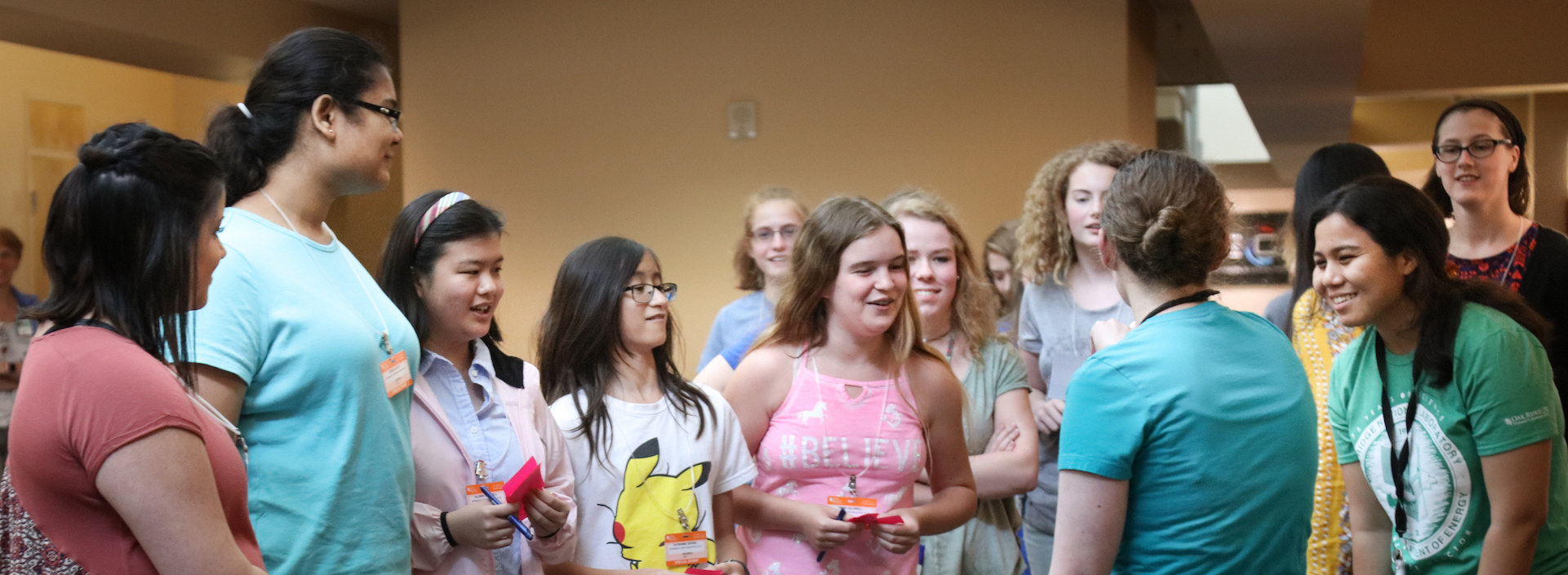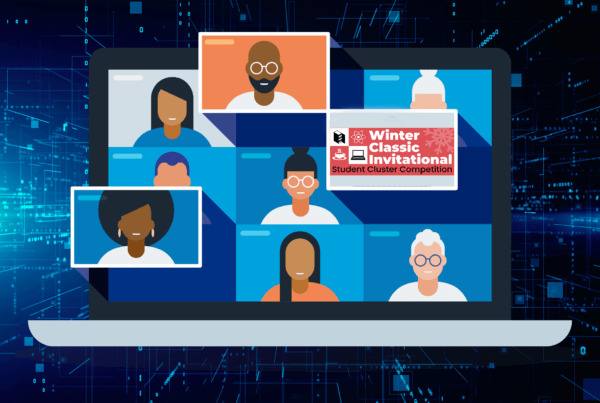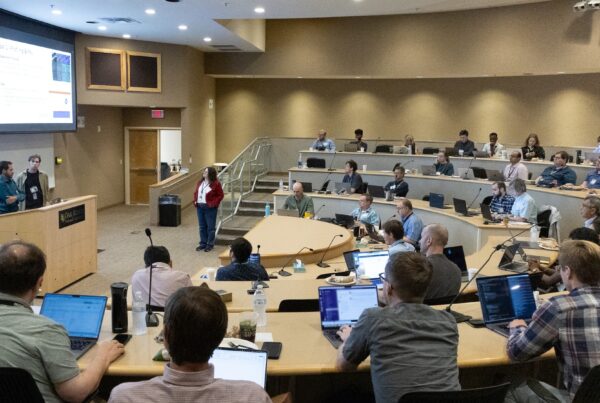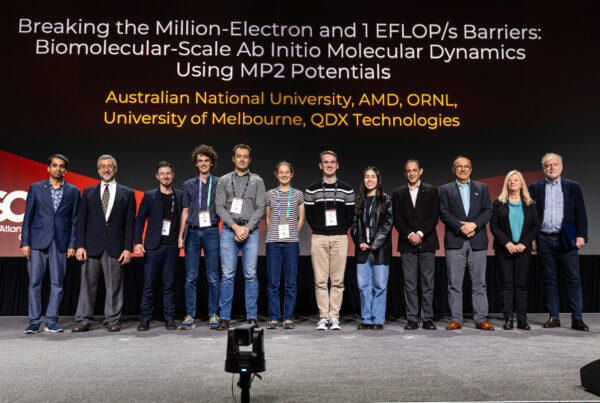Last month staff members at the Oak Ridge Leadership Computing Facility (OLCF), a US Department of Energy (DOE) Office of Science User Facility located at DOE’s Oak Ridge National Laboratory (ORNL), facilitated a new artificial intelligence (AI)–focused event from the Women in Computing (WiC) networking group at ORNL: “Introduce Your Daughter to AI.”
After hosting two consecutive “Introduce Your Daughter to Code” events in 2016 and 2017, WiC sought to spotlight the growing fields of machine learning and AI with a novel event for daughters of ORNL staff members ranging in ages from 10 to 18.
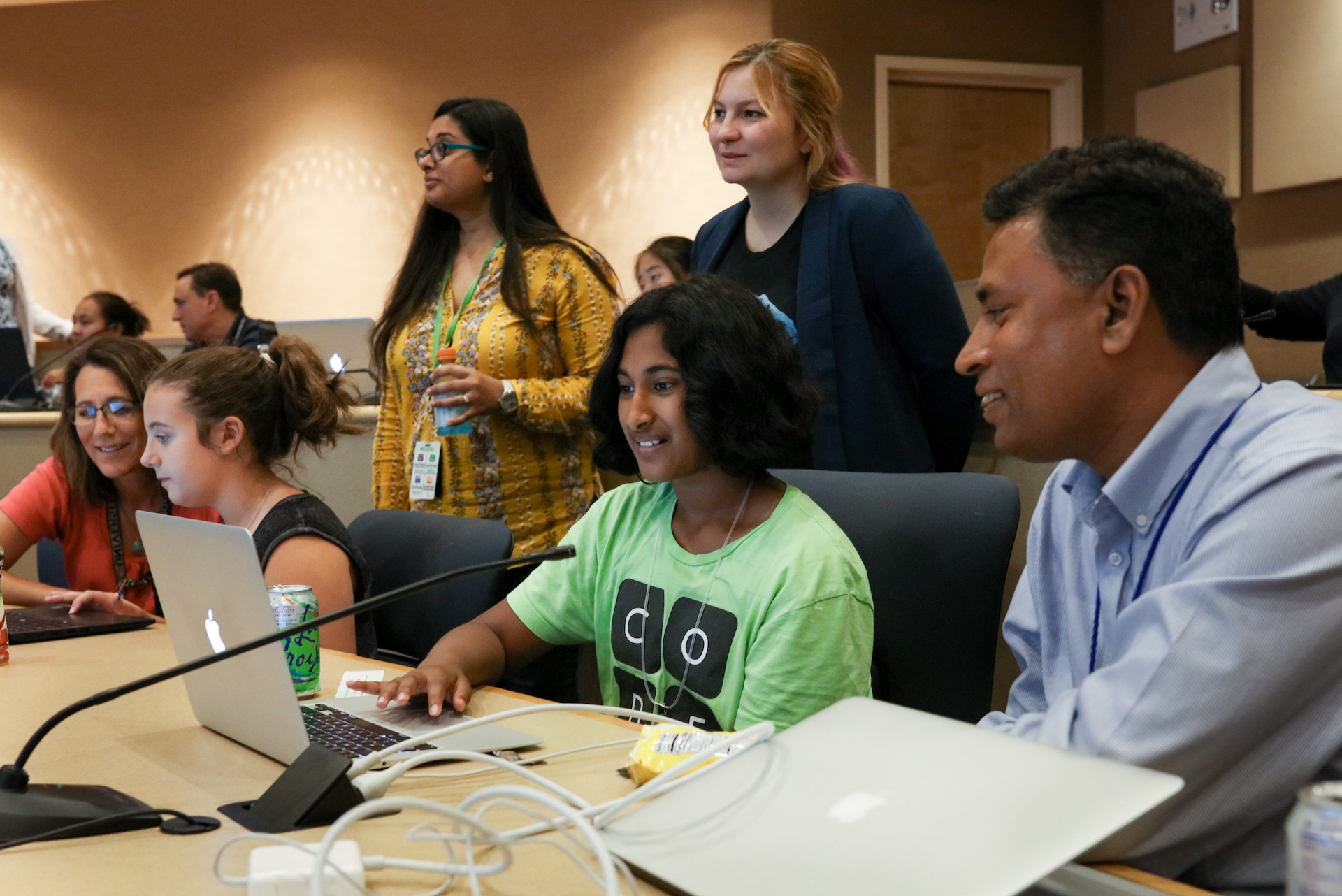
Participants (front, left to right) Marie Urban, Leah Urban, Pragya Nidhi, and Priya Ranjan explore machine learning activities online. OLCF staff members (back left) Swaroop Pophale and (back right) Kat Engstrom assist the girls with these programs.
“WiC’s ‘Introduce Your Daughter’ series has been extremely successful,” said Swaroop Pophale, WiC chair and computer scientist in the OLCF’s Computer Science Research Group. “Last year, participants expressed they wanted something new, so we kicked off our outreach events this year with a day of AI activities.”
On June 22 at ORNL, Liane Russell Distinguished Early Career Fellow Katie Schuman and visiting researcher Dasha Herrmannova guided 24 girls and their parents through machine-learning activities to demonstrate how computers assimilate information by analyzing input data and producing output based on “learned” patterns.
The girls first explored an interactive 3D visualization of a fully connected convolutional neural network, which let them draw numbers that the network would then “guess” based on a grid system. Convolutional neural networks are artificial neural networks that employ a sliding “window” to look at information; therefore, they are exceptional at analyzing visual input such as images.
Using sketch-rnn, an interactive experiment created by Google research scientist David Ha, the girls learned about recurrent neural networks, which are designed to process sequential information. Sketch-rnn suggests ways to finish a drawing based on the initial input it is given. Having trained on millions of doodles from the Quick, Draw! game, sketch-rnn offers more than 100 models.

Participants explored the sketch-rnn program by Google research scientist David Ha. After selecting an item, such as “garden,” from a list of models, the girls began drawing. Having been trained on millions of doodles from the Quick, Draw! game, the recurrent neural network suggests dozens of ways to finish each drawing.
The girls also navigated the TensorFlow playground—an educational visualization of an artificial neural network—and played a human neural network game. Schuman and team colleague Steven Young collaborated with the Neutron Scattering Division’s Thomas Proffen to develop the game, which demonstrates through play how a machine receives input, interprets it, and produces output. During the game, the girls each took on roles as different kinds of neurons, which are cells that transmit information in the brain. Neural networks build on this biological concept.
“The idea is that a deep neural network has several different layers,” Herrmannova said. “The input neurons talk to neurons in the middle layers, and the neurons in the middle layers talk to the output neurons. Activities like this are useful in explaining neural networks because they allow people to actually walk through the concepts rather than trying to comprehend them through a screen.”
Herrmannova said events that teach people about AI and machine learning will become more important as the world undergoes an industrial revolution of sorts.
“Machine learning has grown so much and become so powerful in recent years, it’s almost unprecedented,” she said. “It’s likely going to grow and transform all industries—not just computer science. It’s good for everyone to have an understanding of what it is and how it works, so we can be prepared for that change.”
The following contributed to “Introduce Your Daughter to AI:” Herrmannova, Pophale, Schuman, Anne Berres, Kate Carter, Seema Chouhan, Amy Coen, Katherine Engstrom, Megan Fielden, Rachel Harken, Emily Herron, Matthew Legate, Julie Mitchell, Katie Nuchols, and Aiden Rutter.
ORNL is managed by UT-Battelle for the Department of Energy’s Office of Science, the single largest supporter of basic research in the physical sciences in the United States. DOE’s Office of Science is working to address some of the most pressing challenges of our time. For more information, please visit https://science.energy.gov.


